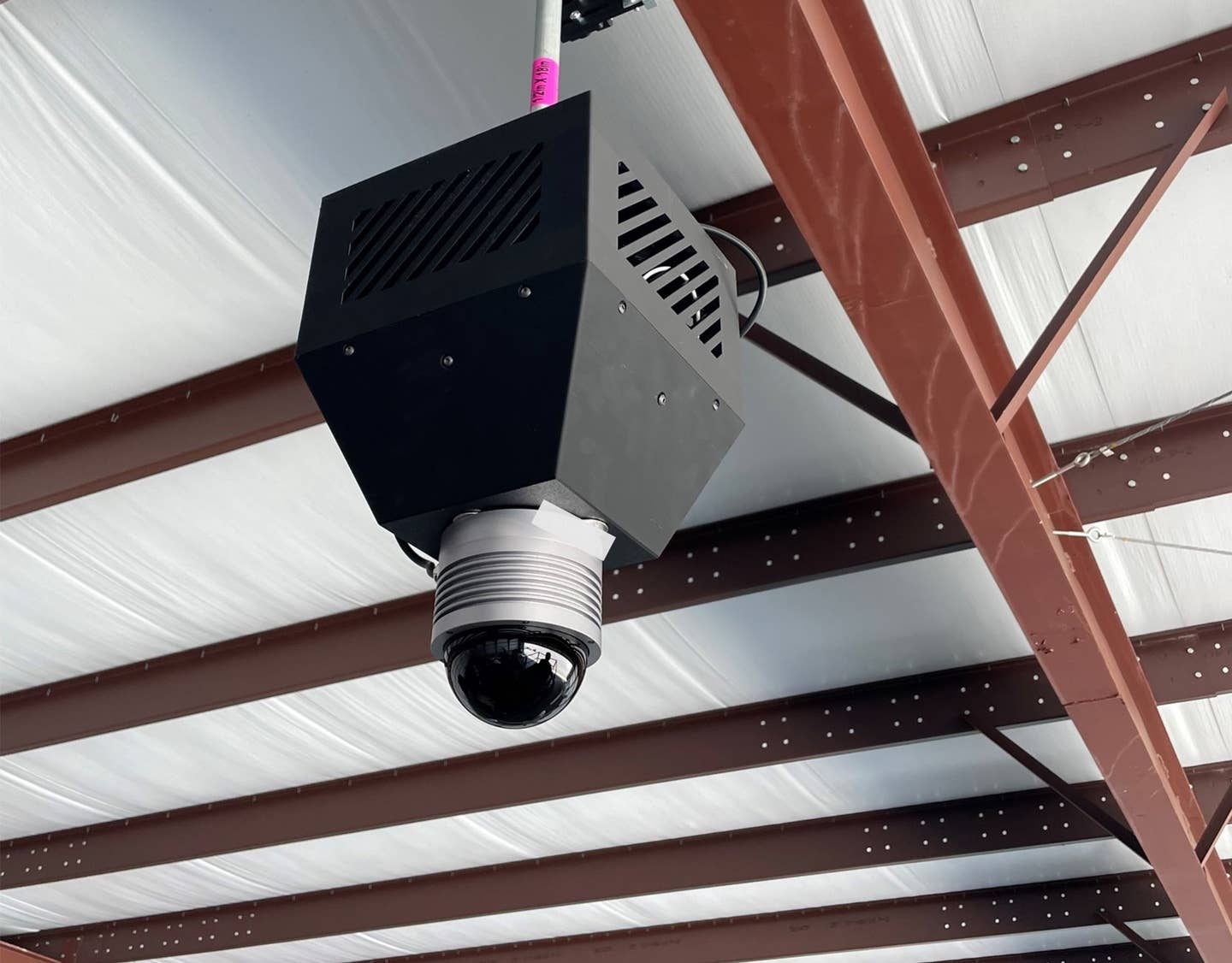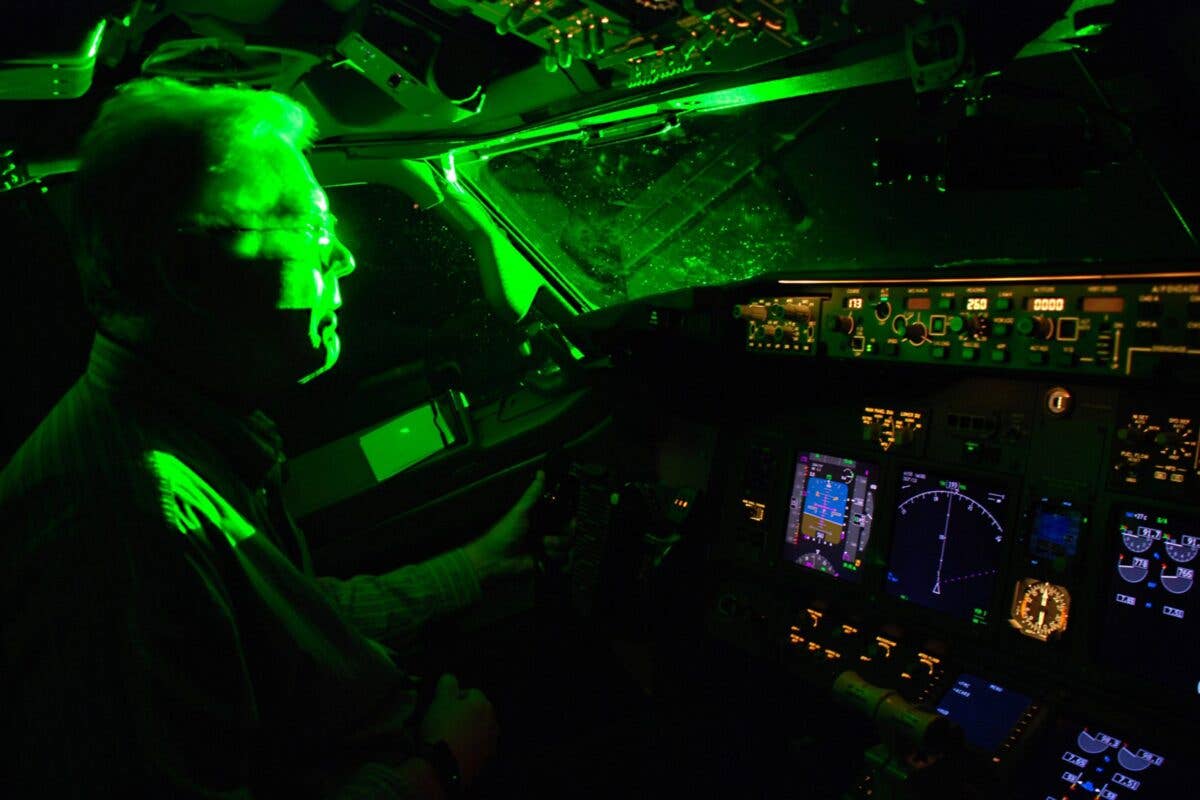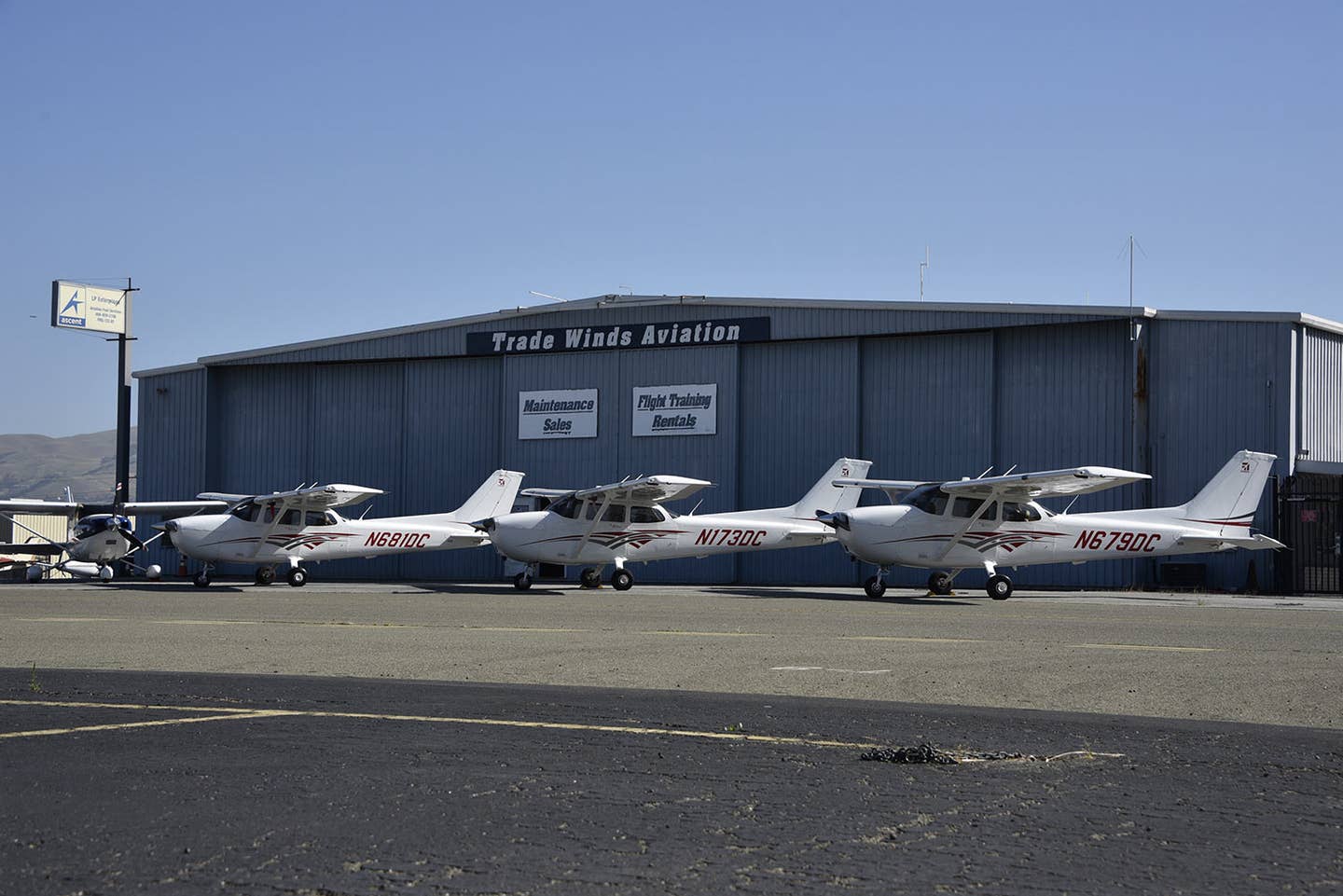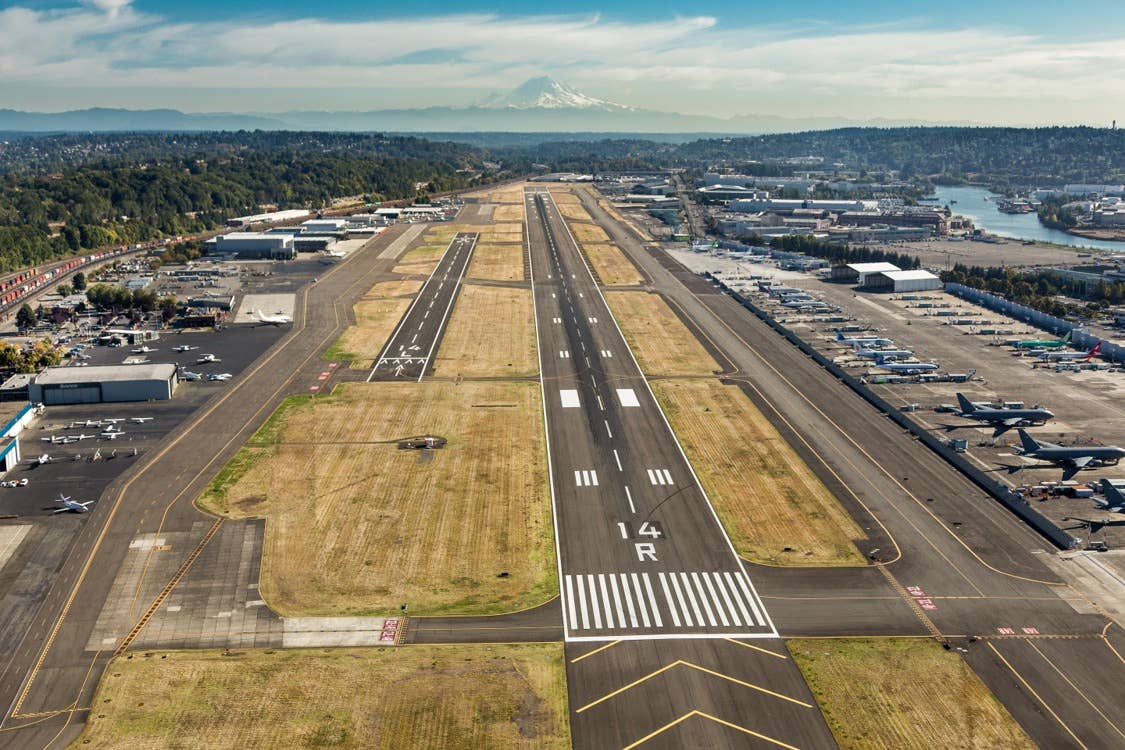New Tech Aims to Ease In-Hangar Aircraft Movements
Developers of Fyve By say the capability will help mitigate hangar rash incidents.

Early Sky View prototype. [Courtesy: Fyve By]
Hangar rash is the aviation synonym for a fender bender. For those that keep their aircraft hangared alongside others, whether temporarily or permanently, the question isn't whether hangar rash will occur, but when?
Fyve By, an Atlanta-based company, seeks to solve the pervasive problem of hangar rash, while simultaneously enhancing ground operation safety.
Benjamin Youngstrom, Fyve By’s co-founder, explained that the vision for the company is an evolution from its initial goal.
“The inspiration came from wanting to make a functional change in aviation, and we started with the idea of making autonomous tugs and ground equipment,” Youngstrom said. “As we worked on it, we came to understand why all of the autonomous ground support equipment companies that have come before have failed and why all of the ones that exist now are going to fail.
“The problem is that they require infrastructure. Driving a tug, you can’t see anything past the front of the aircraft, even when you’re talking about smaller jets. So, if you put the sensors for an autonomous tug on the tug itself, it will have the exact same problem as a human being. You need to build infrastructure, and as we started designing the external vision for the tug, we realized that the external vision is the product and not autonomous ground support equipment.”
The switch in focus toward creating a tool for ground support personnel came in early 2023, and the Fyve By team has been hard at work ever since to bring the product to market.
“Hangar rash incidents easily account for billions of dollars in damage per year, especially when you calculate not only raw damage but additional training expenses, lost revenue, lost trust, additional aircraft value loss, and customer care costs,” Youngstrom said. “So, while the exact repair bill value [to correct the damage] is only a couple billion dollars per year, when you calculate total lost costs, including opportunity costs, you are looking at a five-to-10 billion dollar industry expenditure.”
Hangar Rash Headaches
They anticipate their solution will help mitigate hangar rash incidents, which are a headache to operators, FBOs, insurance underwriters, and others.
“We started out using normal security cameras and then moved on to using 3D cameras, called stereo cameras,” Younstrom said. “But we found very quickly that they were too expensive to set up and were unreliable. They never gave the best view of what we were working on in the hangar.”
After additional iterations, Fyve By’s proprietary Sky View product was unveiled in early 2024. As the name implies, it serves as an eye in the sky, helping to guide in-hangar aircraft movements.
“Eventually we switched over to lidar, which is very complicated to work with,” he said. “It’s a talent intensive technology. You need to understand robotics and need to have an in-depth understanding of computer vision. After we closed our pre-seed funding round, we hired a very capable team of engineers that have managed to make a really reliable system that identifies aircraft, equipment, vehicles, and everything else in a hangar.
“We are able to take that identification to provide a 3D rendering shown on a tablet, accompanied by audio and visual warnings when you get too close to something that can cause damage. In essence, I like to call the final product a ‘Honda Sense’ style backup camera for moving and managing aircraft.
“The goal was to give line crew something simple and straightforward that wouldn’t act as a distraction and instead would just provide value. And when it isn’t providing value [when aircraft aren’t in danger of colliding with one another], it would be something that almost wasn’t noticeable.”
Test Fit and Target
There is additional existing functionality in the system, which the team notes has functionality that other products do not.
“Currently the Sky View system also allows crew to do a ‘test fit and target’ with the system,” Youngstrom said. “Before they move an aircraft, they can use their tablet to place an exact replica of the aircraft they are about to move in the hangar. The system will tell them if the airplane fits where they want it to go and they can set a target at that spot. Unlike the hangar stacking products on the market where you have to eyeball the placement in the hangar using a printed sheet of paper, our ‘test fit and target’ function allows you to know you’ve put your plane exactly where you want it.”
Sky View is currently in beta testing, with a healthy mix of different customer types trying out the technology out for themselves.
“We are selling preorders with customers and have existing orders both from private flight departments and FBOs,” he said. “As part of our beta program, we have an FBO, a maintenance facility, and a private flight department. This accounts for 10 hangars and about a quarter billion dollars’ worth of aircraft being protected by our system right now.”
Youngstrom and the Fyve By team are optimistic for the impact they expect to have in the aviation industry.
“There is a lot on the horizon for our technology,” he said. “We’re looking at features like full range stacking, which would take into account not only can the plane theoretically fit in a hangar but whether a human or machine is realistically capable of moving it where they want it to go. We’re also looking at providing auto slowing, auto braking, and other semirobotic modules.“ But truly our focus now is building useful, reliable, and consistent products that make the lives of line crew, maintenance crew, directors of maintenance, FBO general managers, and insurance adjusters easier. We don’t want to be another overhyped, cash grab, Silicon Valley tech startup that ends up bloated and valueless. We want to be the safe and reliable new industry standard for how aircraft are moved in hangars and on the ramp.”

Sign-up for newsletters & special offers!
Get the latest FLYING stories & special offers delivered directly to your inbox






